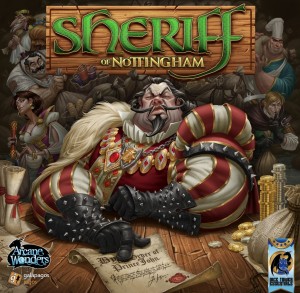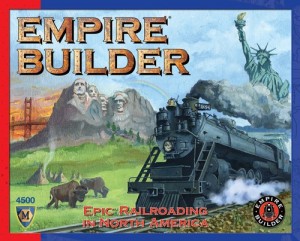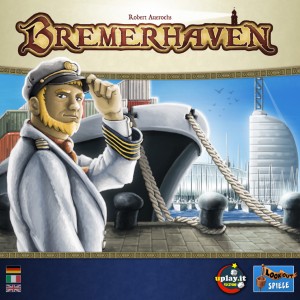 Yesterday we looked at at the mechanic of bluffing and how and when it works in games. Today we will be looking at Sheriff of Nottingham; a game that uses this mechanic quite well.
Released: 2014
Designer: Sergio Halaban, Bryan Pope, and Andre Zatz
Plays: 3-5
EPT: 60 minutes
Sheriff of Nottingham is one of those rare games that when I first hear the premise I know the game will be one that I will either love or hate but am not sure at the time which side of the fence the game will land on. The game sounded like it was a party game made for a small group; and yet when played it was nothing of the sort.
Each player takes on the role of a merchant attempting to get...
Yesterday we looked at at the mechanic of bluffing and how and when it works in games. Today we will be looking at Sheriff of Nottingham; a game that uses this mechanic quite well.
Released: 2014
Designer: Sergio Halaban, Bryan Pope, and Andre Zatz
Plays: 3-5
EPT: 60 minutes
Sheriff of Nottingham is one of those rare games that when I first hear the premise I know the game will be one that I will either love or hate but am not sure at the time which side of the fence the game will land on. The game sounded like it was a party game made for a small group; and yet when played it was nothing of the sort.
Each player takes on the role of a merchant attempting to get...
Follow Up Tuesday – Sheriff of Nottingham
 Yesterday we looked at at the mechanic of bluffing and how and when it works in games. Today we will be looking at Sheriff of Nottingham; a game that uses this mechanic quite well.
Released: 2014
Designer: Sergio Halaban, Bryan Pope, and Andre Zatz
Plays: 3-5
EPT: 60 minutes
Sheriff of Nottingham is one of those rare games that when I first hear the premise I know the game will be one that I will either love or hate but am not sure at the time which side of the fence the game will land on. The game sounded like it was a party game made for a small group; and yet when played it was nothing of the sort.
Each player takes on the role of a merchant attempting to get...
Yesterday we looked at at the mechanic of bluffing and how and when it works in games. Today we will be looking at Sheriff of Nottingham; a game that uses this mechanic quite well.
Released: 2014
Designer: Sergio Halaban, Bryan Pope, and Andre Zatz
Plays: 3-5
EPT: 60 minutes
Sheriff of Nottingham is one of those rare games that when I first hear the premise I know the game will be one that I will either love or hate but am not sure at the time which side of the fence the game will land on. The game sounded like it was a party game made for a small group; and yet when played it was nothing of the sort.
Each player takes on the role of a merchant attempting to get...





